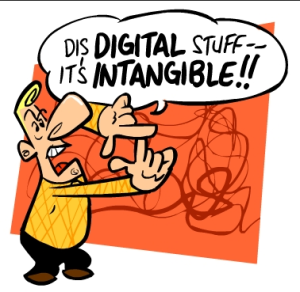 The realization that innovation goes way beyond product innovation is a massive hurdle for many of our existing organizations to overcome, certainly in what they are offering today as solutions.
The realization that innovation goes way beyond product innovation is a massive hurdle for many of our existing organizations to overcome, certainly in what they are offering today as solutions.
We are also witnessing such significant erosion of long-standing practices, and established boundaries between suppliers and customers, you get this feeling that everything is blurring.
This is part two of an extended series on my thoughts on “moving towards a new way of managing innovation” that explores the potential for changing the management of innovation.
How can the innovation process capitalize on all the changes we are undertaking at present in new ways, in broader engagements and collaborations, to deliver more effectively on the promise within our innovation potential?
Well I would suggest we do need to refocus
There is a very strong case we need to rethink the whole management of our innovation activity, as innovation is failing to deliver on its potential promise in the current ways we are attempting to undertake it, highly constrained and under-resourced.
We need to integrate product, service and business model innovation as a very basic must, so we can get closer to the demands within the marketplace necessary to succeed today, where customers are buying outcomes that they value, that fit their particular needs.
The ability to sell solutions that deliver the required outcome is a shift that is extremely challenging and needs a more radical thinking in my opinion on how we value and manage our innovation practices.
We need to find a new way of doing things. I would suggest that it is based on the thinking around the shift from products to solutions, from transactions to growing far more value-adding ongoing relationships, from a supplier of product services into highly valued network partnerships, exploring innovation across all options, instead of delivering on discrete elements; this requires managing the whole ecosystem of the innovation design differently.
I have already started to lay out a case for significant change in my first post “Shifting Radically the Innovation Business Model” suggesting the innovation consultant has to redesign their role, position and service offering, to stay relevant within any management of innovation.
Producers of innovation need to transition radically into a different innovation delivery & design structure.
The radical changes we see occurring all around us requires radical responses. Our business organizations have relied on familiar practices, most established and still stuck in the last century, of driving internal efficiencies and effective practices to the exclusion of adopting a more fluid and adaptive approach that continually adjusts to today’s more consistent changes.
Our organizations are far too rigid, still ‘wedded’ to their tangible investments in land, materials, and labour focusing often exclusively on the financial capital part delivering on the short-term returns only and not fully grasping or experimenting with any new framework that is being born out of the digital age, one that extracts from all the capitals that certainly contribute to innovation in such significant ways.
There is this new set of challenges confronting us. We all feel the need for speed as the pace of innovation quickens, as we face shortening life cycles, greater competition and growing market pressure.
We are being pushed to look increasingly outside our own organization to seek the multiplier effect, to tap into different scale and diversity, and learn and quickly adapt from others.
We are suffering this ‘blurring effect’ as different, often novel business models in their solutions, are cutting across through past traditional borders, combining different value propositions that are totally disrupting and eradicating established positions, in record-breaking time and no one is immune to this ‘disruptive effect’
We are facing some challenging times with our structures, organization designs and the relevant internal skill-sets, all facing significant challenges and rapidly becoming ‘not fit for purpose’ in this challenging business environment.
We are holding onto the tangibles as our point of value we measure and not understanding the real ‘power’ within our intangibles to invest in them at significantly higher levels.
Far too many of our business organization are trapped in the past designs, old business models and product only orientated solutions that fail to excite their customers, who are increasingly becoming restless and demanding solutions to their unique needs, far more ready to abandon established brands if others deliver on those needs.
The shift to intangibles within the digital age

There was a report written in 2013 entitled and under, “The New Normal: Competitive advantage in the digital economy” written for the Big Innovation Centre, an initiative of The Work Foundation and Lancaster University.
This was rightly suggesting that the real sources of value creation and competitive advantage in the digital economy lie in fluid and constantly evolving the intangibles. We still are failing to come to grips with this, to understand its force and position in today’s thinking.
Technology or digitization has been such an underlying catalyst to this shift going on.
They see through their research, that the increasing digitization of economic activities has improved the detailed measurement of business activities (which aids better strategy formulation and positioning), enabled faster and cheaper experimentation (which fosters organizational ambidexterity and increases the likelihood of spawning innovations), facilitated the easier sharing of observations and ideas (which allows for the capturing of insights and learning from network members), and increased the ability to replicate innovations more quickly (which improves transaction cost efficiency).
These they suggest are the dynamic ‘factors’ of the digital economy, and must be harnessed in addition to the conventional factors of production, if firms seek to not just survive but also thrive in the new normal.
They are also outlining in this report,that there are seven intangible sources of competitive advantage and are in effect, interconnected and complementary. The real sources of value creation today and gaining competitive advantage lies in fluid and constantly evolving intangibles, such as firm strategy and positioning, radical innovation and first mover advantages, intangible resources and competencies, organizational ambidexterity, network effects and externalities, transaction cost efficiency, and relational optimality.
It is the smart configurations, unique to each organization, of applying several or more of these intangibles that will create the new value in product and services and drive an even greater business model innovation change, to gain and sustain the competitive advantage.
The thinking they suggest requires a new ecosystem paradigm shift, needing a reinvention of the business model. I would suggest on the very way we manage innovation.
We must recognize our existing approaches to innovation need radically changing.
Why? What do I mean here? We seem to be failing at an awful lot.
Take a look at this list, far from exhaustive but it covers many of the problems we still face on innovation management. Opens a PDF file….. A selection of the causes that presently that are still holding innovation back
We are failing to address our failures in innovation. We need a radical transformation.
It is becoming clearer that organizations acting alone or in restricted collaborations are certainly not ideally placed to capture the opportunities available. They are often stifling innovation. The open innovation attests to that, it has helped but it is failing to be the radical catalyst for exceptional growth.
After some initial spurts of additional growth it seems to simply settle back into being ‘simply part of the established norm’ and is often simply supporting the ongoing incremental performance. Can we go beyond this?
A radically different orchestration of innovation – highly networked
In my view, we must go way beyond “open innovation” as we practice it today. There is a real need for a broader ecosystem approach that taps into a constellation of diverse and specialized players that all come together around a particular challenge, collaborating to deliver growing complex solutions that offer real growth value for the client.
I would argue this fits within a constellation of partners all working towards delivering innovation that is highly valuable, radical, disruptive and distinctive. A network of highly vested ecosystem partners all working towards a common goal on behalf of the organization that holds the principle intellectual property as the founding partner.
An ecosystem arrangement with a multitude of agents participating in resolving complex challenges, sharing their individual knowledge, pooling their collective expertise, working in a collaborative creative environment, of a platform design where the development and commercialization of the process is established. Where it is mutually understood on who shares or owns what, and working on creating real value creation that delivers on the expertise and passion-infused into this.
These clearly needs orchestration but we have to think perhaps differently on who this orchestrator might be. This is the subject of a future post within this discussion.
The need for a radical design and more collaborative exacting solution-driven innovation
Value creation and value delivery are proportionally coming from those that provide a real service to customer needs, and design their business models to be highly adaptive and flexible.
This requires this growing ‘constellation or network’ that provides specialized experience, advice, information, assurance, infrastructure and leasing and far less reliance on the traditional need of owning physical goods, all working within the specific innovation ecosystem and platforms designed to facilitate and collectively solve bolder innovation issues and challenges.
This I would suggest calls for a very radical ecosystem of design consultants and a partnership of vested stakeholders that work within an innovating hub. They collaborate and build the unique ecosystem required that provides the value delivery system to manage this.
My thinking continues in further posts around this theme of creating a greater collective engagement to deliver on the innovation promise in radically different ways, moving towards a different innovation management system than we have at present.
4 thoughts on “Moving towards a new innovation service model”
Comments are closed.